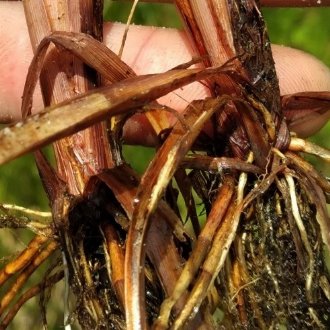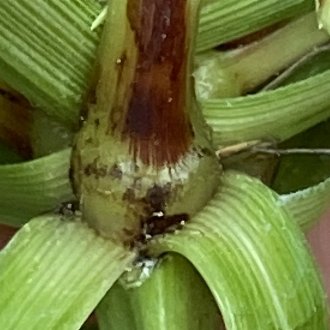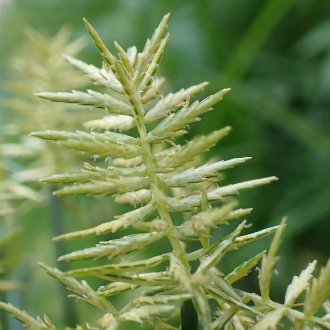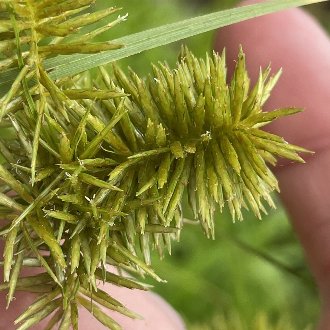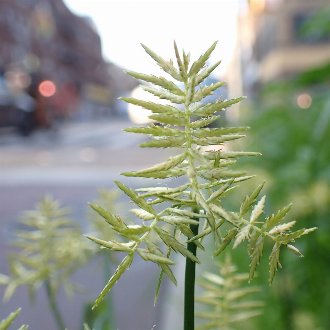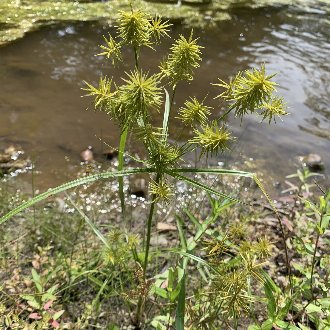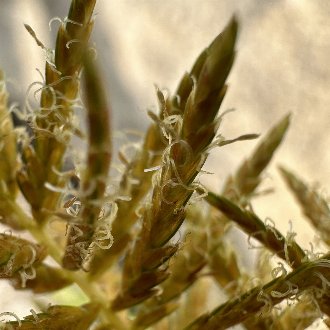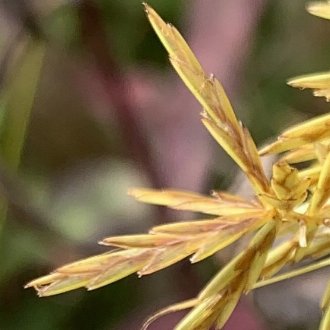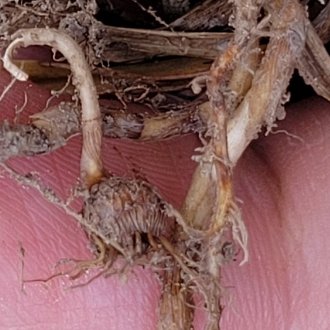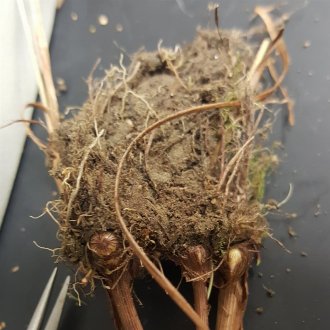Yellow Nutsedge vs Straw-Colored Flatsedge
These two flatsedges are easily confused, mostly overlap in range in North America, and can occur in the same habitats, both natural and anthropogenic. They can be distinguished by the base of the stem, root system, and flower/seed spikes. C. esculentus is more common in anthropogenic habitats and ranges into slightly drier (mesic) conditions, and has more of a preference for loose-textured soils, whereas C. strigosus is more likely in natural habitats, more restricted to moist or wet habitats, and more likely on heavy, muddy soils.
Yellow Nutsedge (Cyperus esculentus) | Straw-Colored Flatsedge (Cyperus strigosus) |
A native, weedy, perennial flatsedge of moist, sunny areas, spreading by rhizomes and edible tubers. | A native perennial flatsedge of moist to wet areas, especially sunny wetlands. |
Base of the stem is not swollen. Photo © Scott Ward, CC BY 4.0. | Base of the stem is swollen and corm-like. Photo © Emily Summerbell, CC BY 4.0. |
Spikes average longer (usually 18-30mm long) and with fewer spikelets per spike (usually 10-20), leading them to look sparser on average. Photo © Sus scrofa, CC BY 4.0. | Spikes average shorter (usually 10-28mm long) and with more spikelets (usually 12-50), leading them to look more densely-packed on average. Photo © Bobby McCabe, CC BY 4.0. |
More likely in anthropogenic habitats and ranges into drier (mesic) conditions. Photo © Sus scrofa, CC BY 4.0. | More likely in wild, natural habitats, and more restricted to moist or wet conditions. Photo © Tom Romeo, CC BY 4.0. |
Spikelets have more (6-34) scales, which are shorter (usually 1.8-2.7mm, rarely to 3.4mm.) Photo © jyoung2399, CC BY 4.0. | Spikelets have fewer (3-11) scales, which are longer (3.2-4.5mm, rarely to 5mm.) Photo © Ryan Schmidt, CC BY 4.0. |
Root system produces numerous small tubers, usually 6-11mm in diameter. These tubers are attached to stolons, not at the base of the main stems. Photo © bunnymom20, Public Domain. | Root system does not produce tubers; the only enlarged, round growth is at the base of each stem. Photo © Charlie Hohn, CC BY 4.0. |
References & External Resources
These short lists show only links helpful for ID. For a complete list of references and resources also covering other aspects of ecology, visit the links section of the full article on each plant, which is the first entry here.



